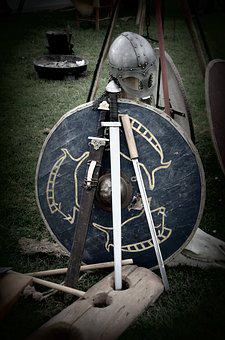Trending
Opinion: How will Project 2025 impact game developers?
The Heritage Foundation's manifesto for the possible next administration could do great harm to many, including large portions of the game development community.
The ultimate guide for how to build your business by travelling to gaming conventions as an Indie Studio trying to make it out in the world.

Do You Want to Build a MEGABOOTH?
A Guide to Gaming Conventions for Indie Studios
By Nicole Canovas

So you’re ready to start shipping your game around the gaming conventions circuit. That’s great! Industry events are a great way to show off your game, build your brand, and get honest feedback from gamers as they sample your titles. It sounds like it could be one big joy ride, but in all actuality, if you want to do it RIGHT, there’s a lot to consider. Setting up shop at a gaming convention is not a spur of the moment decision. Not only would that be impossible, since you need to secure tickets ahead of time for most events, but it would also be a logistical disaster. A schedule and a plan are essential.
The first question you may want to ask yourself (and your team) is “Can you afford it?” GamesIndustry.biz has an extremely helpful article with pricing for all the major industry events mapped out, so I’ll just go over the major points:
Single-screen booths average around $420 per day.
10ft x 10ft booths average around $910 per day for the space alone, with pre-furnished packages costing an additional $200 more per day.
Booth space at large-scale events averages around $6,657 per day at the low end.
That’s just for the booth. Now, what about the people manning the booth? It costs money to keep them around, too. First, there’s the travel cost, which could include plane or train tickets per person, or gas for your vehicle if you plan on driving. Then there are accommodations. Air BnB is a great alternative to hotels, but obviously, unless you have friends or family in the area, it’s not going to be a free ride.

In addition to these financial drains, running a booth for three days straight can be a taxing and challenging undertaking. “Hijacking your development team to make a pristine, polished build outside of your regular cycles can become all-consuming – everyone that’s worked on an E3 build knows the whirling vortex of suck it becomes – and very few small teams can put together a show-quality build,” says Shannon Drake in a Gamasutra article. The pressure is on at conventions, and your team is sure to feel the stress of not only running the booth, but also of knowing that while they are away, game development and their regular duties may be coming to a halt or, worse yet, crashing hard. It’s important to keep your team’s HP up, so make sure that you keep them as comfortable and rested as possible. This will allow them to concentrate on presenting your game successfully on the expo floor, and not on what’s burning back at the office.
It’s also important to consider what you’ll need in terms of gear. You want to bring demos of your game, right? Well you’re going to need a system for guests to play it on, and some sort of seating arrangement for them while they do so. Your booth will also need some eye-catching decorations or posters as well. The GamesIndustry.biz article suggests you consider:
PC/console/other devices for demos
Monitors/TVs
Putting together a demo build of your game
Booth carpet/flooring (booths often require carpeting, or another type of flooring, the cost of which may or may not be included in the price of the space)
Banners and signage (cost will depend on size, but GDC packages start at around $200 for 72" x 36" vinyl banners)
Internet access. E3 charges $1000 a day for internet access in a booth!
It’s also worth noting that most of these items will incur some sort of shipping and/or storage costs, and getting them to the booth itself may require hiring services such as forklifts, electrical labor, and freight handling.
So yeah, in a nutshell, it’s pretty cost consuming; but if you do it right, it will be worth it. Now, that was only half of the presentation concerns you should be addressing. The other half is what you should bring along to promote your game itself. Posters, business cards, and copies of your game are necessities, but there are far more creative ways to leave a lasting impression.

First, think about what makes your game unique or gives it personality. Take that and run with it. For example, when designing the characters in Viking Democracy, our artists wanted each character to have a distinct look. Bjorn carries a ham hock, the game’s unofficial sigil, and Hilde was designed as a rugged and battle-scarred warrior woman.
Take features like these and get crafty and recreating some of the iconic images from your own game. Stickers are a great idea, and are easy to make yourself if you don’t have the extra cash to send away for them. For stickers, all you need to do is print out your design on sticker paper and then cut them out. Pins also seem to be a rapidly growing trend, and another affordable one at that. The easiest DIY method I’ve come across can be found here in a YouTube video by an awesome illustrator that goes by UmmmHeather, who uses Shrinky Dink® paper and Mod Podge® glue to make magic.
If your game features a specific time period, such as the Viking age, use that for inspiration. Make the environment of your booth feel similar to the environment of your game, so that guests to your booth get a more immersive experience. If your game is dark and gothic, decorate as such. Little things to pull your title’s plot, characters, or setting into real life will leave lasting impressions.
Running a booth at a gaming industry convention is not just about signs and smiles. It can be a tremendous opportunity, but only if it is handled correctly. It can also be a challenging and expensive undertaking, which makes planning and coordinating efforts that much more important. To summarize, and to identify whether running a booth at the next convention is right for you and your studio, ask yourself these questions:
Does attending an industry event fit in with the overall marketing strategy of the game?
Is it affordable for your studio?
Consider which personnel you will take. Can they be pulled away without their projects losing momentum?
Do you have sufficient time to make arrangements to attend the convention, and to design your booth?
How can you do more than just offer a demo of your game? How can you be unique, creative, and memorable?
All in all, be your game’s biggest fan. Believe in your game, believe in your team, and plan, plan, plan.
Read more about:
BlogsYou May Also Like